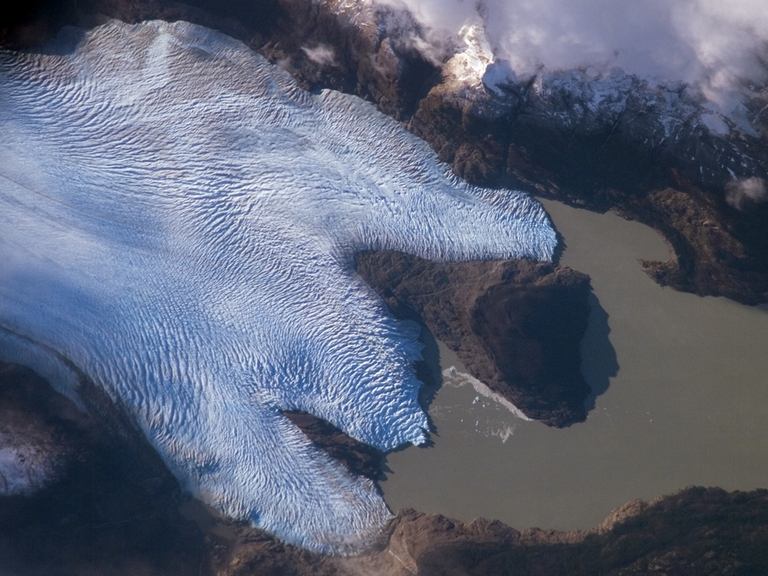
After a landslide led to twelve deaths on the island of Ischia, questions have been raised about the impacts of illegal building, tourism, and climate change.
In just 15 days, two icebergs that cover thousands of square kilometres broke off from Chile’s Grey Glacier. Such alarming events are taking place more frequently due to rising temperatures.
The images of two crystal-blue icebergs floating on Grey Lake in Patagonia could appear spectacular at first sight, but they actually are simply alarming. They’re in fact two huge blocks of ice that have broken off from Grey Glacier, in Chile’s Torres del Paine National Park, between late February and early March.
Two huge icebergs of thousands of square meters that are no longer part of the thousand-year-old glacier. To put them into perspective, according to AFP, the dimension of the first iceberg is 8.8 hectares, the size of 12 soccer fields, and detached on 20 February, while the second one, which broke off on 7 March, was of 6 hectares. This means that only 15 days have passed from one break to the other.
Even if the detachment of ice from glaciers is a natural phenomenon, what alarms experts is the increased frequency of these events. In fact, the latest detachment of ice from Grey Glacier took place in November 2017, and it was an even larger iceberg. But the other significant ruptures date as far back as the early 1990’s.
There is a greater frequency in the occurrence of break-off in this east side of the glacier and more data is required to assess its stability.Ricardo Jana, scientist
Scientists are blaming these ever more frequent events on a changing climate. “Temperature rises above the normal average and intense rainfall were registered together with an increase in water level in the lake, factors that could explain the separation,” said Ricardo Jana, researcher and climate change expert at INACH, Chile’s Antarctic Institute. In fact, after 2018 as the fourth hottest year ever in a row, 2019 has started in the same trajectory, with the austral summer setting new records. For instance, Santiago – where the COP25 will be held in December 2019 – registered the record temperature of 38.3 degrees on 26 January, while other areas in central Chile reached 40 degrees. Even Patagonia had hot temperatures: for the first time in history the town of Puerto Natales, on the southern tip of the country, exceeded 30 degrees.
According to experts, this abnormal trend has weakened the glacier’s walls causing the breaks. The glacier, a 270-square-kilometre giant, has lost two kilometres over just 30 years. These phenomena seem to be part of a downward spiral: rising temperatures and increased rainfalls speed up the melting of ice which in turn increases the lake’s water level and, at the same time, reduces the ability of the glacier to reflect sun rays, thus exacerbating the problem.
It’s a vicious cycle that not only affects this part of national park but also other Chilean glaciers, which cover more than 20,000 square kilometres of land in the country (excluding the region of Chilean Antartica) and 80 per cent of which have retreated in the past decades due to global warming according to the United Nations. Rising temperatures have even managed to break the oldest and thickest ice cap of the Arctic circle for the first time in recorded history. A situation that could only get worse if we don’t act now.
Siamo anche su WhatsApp. Segui il canale ufficiale LifeGate per restare aggiornata, aggiornato sulle ultime notizie e sulle nostre attività.
![]()
Quest'opera è distribuita con Licenza Creative Commons Attribuzione - Non commerciale - Non opere derivate 4.0 Internazionale.
After a landslide led to twelve deaths on the island of Ischia, questions have been raised about the impacts of illegal building, tourism, and climate change.
Not much snow, peaks of 19 degrees Celsius in Norway and even 28 degrees in France: official data confirms the anomalously high temperatures of this past winter.
Ocean warming has risen to record highs over the last five years: just in 2019 the heat released into the world’s oceans was equivalent to that of 5-6 atomic bombs per second. The culprit, no doubt, is climate change.
What did Greta Thunberg tell participants at the 2020 World Economic Forum in Davos? Once again, the Swedish activist underlined the total lack of concrete solutions to the climate crisis presented by leaders so far.
The list of human and animal victims of the Australia wildfires keeps growing – one species might already have gone extinct – as the smoke even reaches South America.
Kivalina is located on a small island once guarded by sea ice, which is now melting due to global warming. While the sea threatens to wipe the village off the face of the Earth, its inhabitants refuse to give up their lives and traditions.
Thanks to activists, the voice of the world’s peoples resounded through the COP25 like an alarm bell. Governments didn’t reach the results they demanded, but their cries and messages were stronger than ever, reaching even those who weren’t in Madrid.
Climate change poses a risk for millions. However, women are the most vulnerable to its negative consequences: a few simple considerations by the Italian Climate Network help us perceive the global implications of this.
The COP25 ended two days late and with very few steps ahead made. Climate negotiations in 2020 will be an uphill battle as political will clearly seems to be lacking, once again.









